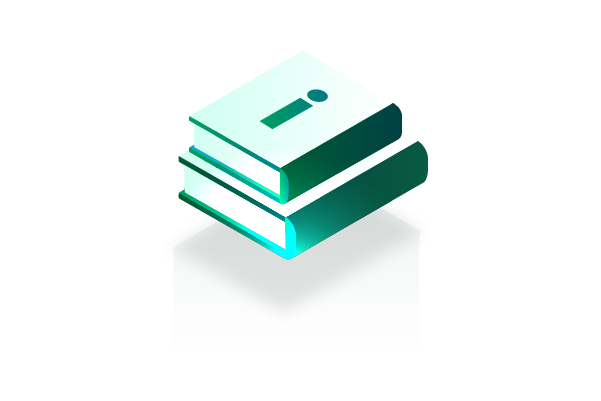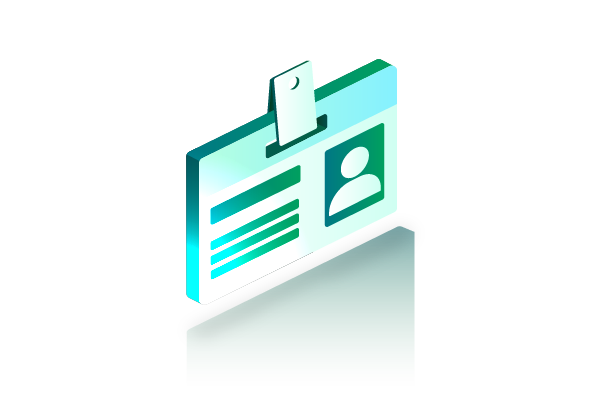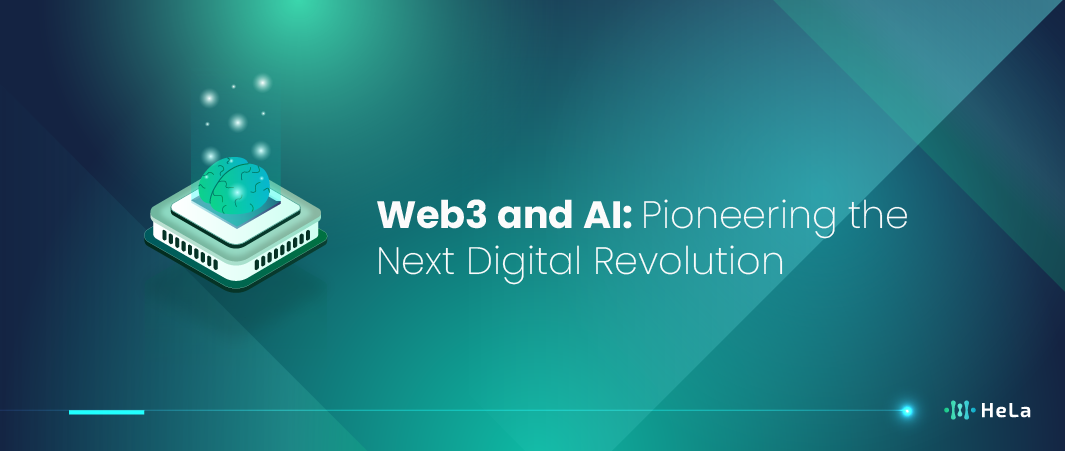The world of technology is undergoing rapid transformation, with two of the most talked-about concepts driving this change: Web3 and AI. These technologies are not just buzzwords but are reshaping how we interact with digital spaces, offering new possibilities and solutions. As we delve into this new era, it becomes evident that Web3 and AI are not only complementing each other but are also paving the way for unprecedented advancements.
Web3, the next generation of the internet, promises a decentralized and user-centric digital ecosystem. Unlike the current web, where centralized entities control data and services, Web3 aims to distribute power and enhance privacy. At the same time, AI continues to evolve, making machines smarter, more intuitive, and capable of performing tasks that once required human intelligence. Together, these technologies are creating a synergy that could redefine industries and our daily lives.
In this article, we will explore how Web3 and AI are collaborating to drive innovation, enhance security, and improve user experiences. We will look at the current trends, challenges, and future prospects of this dynamic duo, illustrating how they are laying the foundation for the next digital revolution.
Understanding Web3 and Its Core Principles

Web3, often referred to as the decentralized web, is an evolution of the internet. It seeks to create a digital ecosystem where users have control over their data and digital assets. Unlike Web2, which is dominated by a few large corporations, Web3 aims to decentralize data storage, processing, and distribution. This shift could drastically change how we interact with digital services and applications.
The core principles of Web3 include decentralization, transparency, and user empowerment. Decentralization removes the need for intermediaries, allowing users to interact directly with each other through peer-to-peer networks. Transparency ensures that all transactions and data exchanges are visible and verifiable, enhancing trust and reducing the chances of fraud. User empowerment puts individuals in control of their digital identities and assets, enhancing privacy and security.
Key technologies enabling Web3 include blockchain, decentralized finance (DeFi), and non-fungible tokens (NFTs). Blockchain technology provides the backbone for decentralization, enabling secure, transparent, and tamper-proof transactions. DeFi applications are transforming traditional financial systems by removing intermediaries, while NFTs are revolutionizing digital ownership and creativity.
The Role of AI in Shaping the Future

Artificial Intelligence (AI) has made significant strides over the past decade, becoming an integral part of various industries. From virtual assistants to advanced data analytics, AI is making systems smarter and more efficient. The core of AI’s capability lies in its ability to learn from data, make decisions, and improve over time without human intervention.
AI in Healthcare
AI’s role in shaping the future is vast. In healthcare, AI is helping diagnose diseases more accurately and quickly than ever before. Machine learning algorithms analyze medical images, identify patterns, and assist doctors in making precise diagnoses. AI is also used to develop personalized treatment plans, predict patient outcomes, and streamline hospital operations, enhancing the overall efficiency and quality of care.
AI in Finance
In finance, AI algorithms are optimizing trading strategies and detecting fraudulent activities. High-frequency trading platforms use AI to analyze market data in real-time and execute trades at lightning speeds. AI also powers risk management systems that identify unusual patterns indicative of fraud, helping financial institutions protect their assets and customers. Additionally, AI-driven financial advisory services offer personalized investment recommendations, making financial planning more accessible.
AI in Everyday Life
In everyday life, AI-powered assistants like Siri and Alexa are becoming more intuitive, making our interactions with technology smoother and more natural. These virtual assistants use natural language processing (NLP) to understand and respond to user queries, manage schedules, control smart home devices, and provide real-time information. The continuous improvement in AI capabilities ensures that these assistants become more helpful and reliable over time.
Also Read: Top 7 Different Types of Blockchain Nodes
AI in Automation
Moreover, AI is enhancing automation across sectors, driving innovation in robotics, logistics, and customer service. In manufacturing, AI-powered robots perform complex tasks with precision and efficiency, reducing human error and increasing productivity. In logistics, AI optimizes supply chain operations, from inventory management to route planning, ensuring timely and cost-effective deliveries. In customer service, AI chatbots handle routine inquiries, freeing up human agents to focus on more complex issues, improving overall customer satisfaction.
Advanced AI Technologies
Machine learning and deep learning technologies are at the forefront, enabling machines to analyze vast amounts of data, recognize patterns, and make predictions with remarkable accuracy. These technologies are crucial for developing advanced AI applications, from autonomous vehicles that navigate safely without human input to predictive maintenance systems that anticipate equipment failures before they occur. The continuous advancements in AI research and development promise even more innovative solutions in the future.
How Web3 and AI Are Converging

The convergence of Web3 and AI is creating a new landscape of opportunities and challenges. By integrating AI into the Web3 ecosystem, developers can enhance the functionality and efficiency of decentralized applications (dApps). For instance, AI can be used to improve blockchain scalability, optimize transaction speeds, and enhance the security of decentralized networks.
Enhancing Blockchain Scalability with AI
One of the key areas where AI can contribute to Web3 is in improving blockchain scalability. Traditional blockchains face limitations in transaction throughput and speed. AI algorithms can help optimize the validation processes, predict network congestion, and adjust transaction fees dynamically. By doing so, AI enhances the overall efficiency and user experience of decentralized networks, making them more viable for widespread adoption.
AI for Security in Decentralized Networks
Integrating AI with Web3 also brings significant security benefits. AI algorithms can analyze blockchain data in real-time, detecting anomalies and preventing attacks before they happen. Machine learning models can identify unusual patterns indicative of potential security threats, enabling proactive measures to protect decentralized applications. This synergy between AI and Web3 enhances the robustness and trustworthiness of the entire ecosystem.
Intelligent dApps and User Experience
The development of intelligent dApps is another exciting outcome of the convergence between Web3 and AI. These applications can learn from user interactions, adapt to preferences, and provide personalized experiences. AI-driven dApps can offer tailored recommendations, automate routine tasks, and predict user needs, significantly improving functionality and user satisfaction over time.
Data Management and Analysis
AI plays a crucial role in managing and analyzing the vast amounts of data generated by Web3 applications. Machine learning models can identify trends, predict user behavior, and optimize the performance of decentralized networks. This capability allows for more efficient and user-friendly applications, enhancing the overall effectiveness of Web3 technologies. AI’s analytical power ensures that data-driven decisions can be made swiftly, benefiting both users and developers.
Future Prospects of AI and Web3 Integration
The combination of AI and Web3 is setting the stage for a new generation of digital services that are more intelligent, secure, and user-centric. As these technologies continue to evolve, we can expect even more sophisticated applications that leverage the strengths of both AI and decentralized networks. The ongoing research and development in this field promise to unlock new possibilities, driving the next wave of innovation in the digital landscape.
Real-World Applications of Web3 and AI
The integration of Web3 and AI is already making waves in various industries. In finance, AI-driven dApps are transforming traditional banking and investment systems. Decentralized exchanges (DEXs) are leveraging AI to enhance trading algorithms, reduce slippage, and improve liquidity management. AI is also being used to develop smarter credit scoring models, making financial services more inclusive and accessible.
AI-Driven Decentralized Finance (DeFi)
In finance, AI-driven dApps are transforming traditional banking and investment systems. Decentralized exchanges (DEXs) are leveraging AI to enhance trading algorithms, reduce slippage, and improve liquidity management. AI is also being used to develop smarter credit scoring models, making financial services more inclusive and accessible. This integration is leading to more efficient, transparent, and user-friendly financial systems that operate without intermediaries.
AI in Healthcare dApps
In healthcare, AI-powered dApps are improving patient care through advanced diagnostics and personalized treatment plans. Machine learning algorithms analyze patient data to provide accurate diagnoses and suggest optimal treatment options. Blockchain technology ensures the secure and transparent sharing of medical records, enhancing collaboration among healthcare providers. This combination is paving the way for a more efficient and patient-centric healthcare system, where data privacy and security are paramount.
AI and Web3 in Supply Chain Management
Moreover, AI and Web3 are revolutionizing supply chain management. By integrating AI with blockchain, businesses can enhance traceability, reduce fraud, and improve operational efficiency. AI algorithms track and predict supply chain disruptions, while blockchain ensures the transparency and immutability of transaction records. Smart contracts, powered by AI, automate complex supply chain processes, reducing costs and increasing transparency. This integration ensures that products can be tracked from origin to consumer, enhancing trust and reliability.
Enhancing Digital Identity and Security
AI and Web3 are also making significant strides in enhancing digital identity and security. Decentralized identity systems use blockchain to give individuals control over their personal data, reducing reliance on centralized authorities. AI enhances these systems by verifying identities and detecting fraudulent activities. This combination ensures that users can securely manage their digital identities, protecting their privacy and reducing the risk of identity theft.
Smart Cities and IoT
The integration of AI and Web3 is paving the way for the development of smart cities and the Internet of Things (IoT). AI algorithms analyze data from various sensors and devices to optimize urban infrastructure and services. Blockchain technology ensures secure and transparent data exchanges among IoT devices, enhancing interoperability and security. This synergy enables the creation of intelligent urban environments that are more responsive to the needs of their inhabitants, improving the quality of life in cities.
Challenges and Future Prospects
Despite the promising synergy between Web3 and AI, several challenges need to be addressed. One major hurdle is scalability. Blockchain networks, while secure, often face limitations in transaction speeds and processing power. Integrating AI to enhance these networks requires overcoming technical challenges related to data privacy, interoperability, and computational efficiency.
Scalability Issues
One of the significant challenges in integrating Web3 and AI is scalability. Blockchain networks are inherently secure but can struggle with transaction speeds and processing power. AI can help optimize these networks, but the computational demands of AI algorithms add an extra layer of complexity. Developers are exploring various solutions, such as layer-2 scaling techniques and sharding, to improve the performance and scalability of blockchain networks without compromising security.
Data Privacy and Security
Data privacy and security are critical concerns in the integration of Web3 and AI. While blockchain offers robust security features, AI systems require access to vast amounts of data to function effectively. Ensuring that this data is handled in a privacy-preserving manner is challenging. Techniques like federated learning and differential privacy are being explored to allow AI to learn from decentralized data sources without compromising user privacy.
Interoperability Challenges
Interoperability between different blockchain platforms and AI systems is another challenge. For the full potential of Web3 and AI to be realized, seamless communication and interaction between various networks and applications are essential. Standardizing protocols and developing interoperable solutions are ongoing efforts that aim to create a cohesive ecosystem where data and assets can move freely across different platforms.
Regulatory Uncertainty
Another challenge is regulatory uncertainty. The decentralized nature of Web3 and the advanced capabilities of AI pose new regulatory questions. Governments and regulatory bodies are still figuring out how to address issues related to data privacy, security, and ethical AI use. Striking the right balance between innovation and regulation will be crucial for the widespread adoption of these technologies. Clear and consistent regulatory frameworks can provide the necessary guidance while fostering innovation.
Future Prospects
Looking ahead, the future of Web3 and AI is filled with potential. Advancements in quantum computing, more efficient algorithms, and greater collaboration between tech communities could drive the next wave of innovation. As these technologies mature, we can expect to see more sophisticated, user-centric applications that transform how we live, work, and interact with the digital world.
Also Read: 7 Best Crypto Friendly Banks Worldwide in 2024
Quantum Computing and Advanced Algorithms
Quantum computing holds the promise of solving some of the most complex problems faced by AI and blockchain. It could significantly enhance processing power and speed, making blockchain networks more efficient and capable of handling large-scale AI computations. Additionally, advancements in algorithms will continue to improve the performance and capabilities of AI systems, enabling them to tackle new and more complex tasks.
Collaboration and Innovation
Greater collaboration between tech communities, researchers, and industry leaders will be essential in driving innovation. Open-source projects, cross-industry partnerships, and academic research will play a crucial role in overcoming current challenges and unlocking new opportunities. By working together, the tech community can create a more robust and dynamic ecosystem that harnesses the full potential of Web3 and AI.
Conclusion
The intersection of Web3 and AI represents a significant leap forward in digital technology. These technologies are not just enhancing existing systems but are creating entirely new paradigms for how we interact with the digital world. From decentralized finance to intelligent healthcare solutions, the possibilities are vast and exciting.
As we continue to explore and develop these technologies, it’s essential to address the challenges they bring. Scalability, regulatory frameworks, and ethical considerations will play a crucial role in shaping the future of Web3 and AI. By fostering innovation and collaboration, we can overcome these hurdles and unlock the full potential of these transformative technologies.
In conclusion, the journey of Web3 and AI is just beginning. Their combined power promises to revolutionize industries, enhance security, and improve user experiences across the globe. As we stand on the cusp of this new digital era, it is an exciting time for innovators, developers, and users alike. The next digital revolution is here, and Web3 and AI are at its heart, driving us towards a more connected, intelligent, and decentralized future.
Disclaimer: The information provided by HeLa Labs in this article is intended for general informational purposes and does not reflect the company’s opinion. It is not intended as investment advice or recommendations. Readers are strongly advised to conduct their own thorough research and consult with a qualified financial advisor before making any financial decisions.

Joshua Soriano
I am a writer specializing in decentralized systems, digital assets, and Web3 innovation. I develop research-driven explainers, case studies, and thought leadership that connect blockchain infrastructure, smart contract design, and tokenization models to real-world outcomes.
My work focuses on translating complex technical concepts into clear, actionable narratives for builders, businesses, and investors, highlighting transparency, security, and operational efficiency. Each piece blends primary-source research, protocol documentation, and practitioner insights to surface what matters for adoption and risk reduction, helping teams make informed decisions with precise, accessible content.
- Joshua Soriano#molongui-disabled-link
- Joshua Soriano#molongui-disabled-link
- Joshua Soriano#molongui-disabled-link
- Joshua Soriano#molongui-disabled-link

